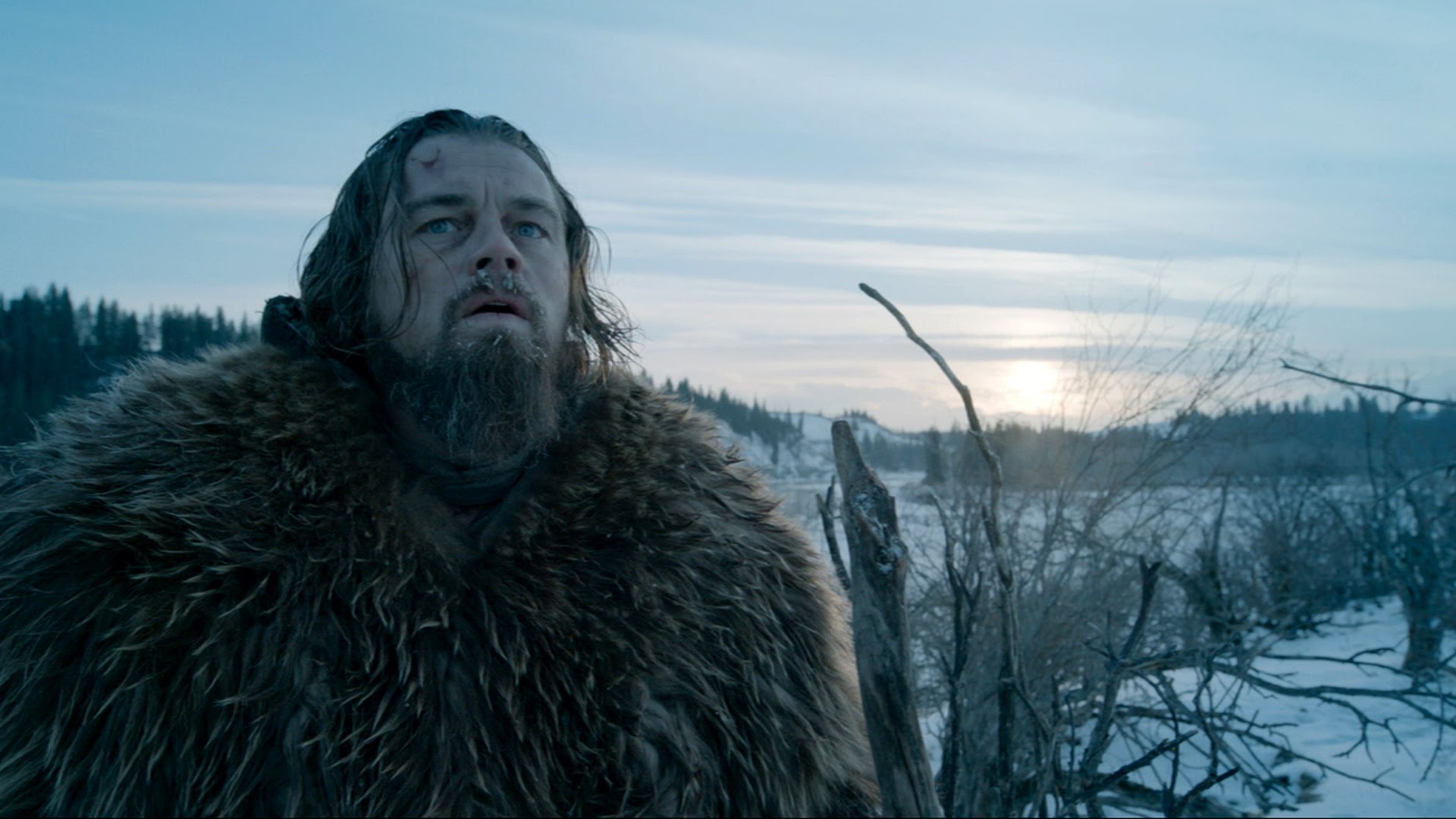
MPAA Rating: R | Rating: ★★½
Release year: 2015
Genre: Adventure, Western Director: Iñárritu
I don’t like revenge stories. I don’t buy into an eye-for-an-eye ethic, I’m unmoved by a vengeance-driven character arc, and I don’t feel a sense of catharsis when the hero inevitably kills the villain. The bloodlust does little for me.
I do like survival stories. In high school, I was enthralled by the story of Ernest Shackleton and his miraculous journey across Antarctica and the open ocean. Films about humanity against nature like 127 Hours and All is Lost, or films about humanity surviving human depravity, like Rescue Dawn or 12 Years A Slave, all intrigue me. I’m fascinated by the human desire and capacity to endure against all odds.
The Revenant is both a survival and a revenge story, but the latter thematically outweighs the former. In the snowy wilderness of 1820s America, scout and trapper Hugh Glass (Leonardo DiCaprio) is left for dead by his companions after barely surviving a vicious bear attack. Alone, injured, without weapons or food, and hunted by Pawnee warriors, Glass has all the odds stacked against him. What drives him forward is a deep desire to confront the men who left him, especially the villain, Fitzgerald (Tom Hardy) who murdered Glass’s son before his eyes.
Leonardo DiCaprio gives his most physical performance yet, with most of his dialogue a series of grunts and groans as he drags himself through mud and snow and blood. Tom Hardy is a one-trick pony, making only offensive or deceitful statements in his grunt-like dialect. There’s a lot of grunting going on in The Revenant, a lot of blood and viscera. The intense bear attack on Glass is drawn out and agonizing to watch. (Speaking of ponies a few sentences ago: horses do not fare well at all in this movie. One shares a similar fate to Han Solo’s tauntaun, if you get my drift.) Filmmaker Alejandro González Iñárritu, fresh off his Oscar wins for last year’s Birdman, shoves the audience’s faces into the violence and forces them to stare into the gore and depravity. This face-shoving becomes exhausting, and with the nearly 3-hour time frame, it’s a drawn out exercise in excruciation.
It’s unclear what Iñárritu is trying to communicate with this film— I can’t help but think he adds images (particularly religious ones) for the sake of provocation, but with little-to-nothing behind them in terms of actual ideas. Dream sequences include scenes of Glass’s wife floating above him, or his son wandering through the ruins of a Catholic church. How these images connect to the greater story or Glass’s motivation is wholly unclear and unexplored, and feels tonally bizarre for a film seeming to revel in grime and earthiness. Perhaps it’s an attempt to mashup Native American spirituality with Christian religious symbols, but its intention is so obscure as to be meaningless. A monologue from Fitzgerald about the nature of God reveals little more than Fitzgerald’s twisted view of morality, which was already abundantly clear when he murdered one man and left Glass for dead. Both men’s story arcs are simplistic and fairly uninteresting—neither character really changes or transforms throughout the film. Both of their ethics and sense of justice remain static; Glass is a good man in bad circumstances, while Fitzgerald is just a bad man, period.
The most notable quality of The Revenant is the cinematography of Emmanuel Lubezki, the DP behind many of Terrence Malick’s and Alfonso Cuaron’s films. The camera hovers and twirls in the midst of intense battles and beautiful landscapes with a sort of transcendence, a spiritual witness of the glory and depravity before it. For all its ability to capture beauty and wonder, the camerawork was actually a distraction for me. There’s a fine line between being impressed by the beauty of the images in themselves, and impressed with the camerawork and technique. I’m far more positive about a film when I can say, “Wow, what a beautiful, provocative image!” than “Wow, I wonder how they got the camera to move like that in the battle sequence without making any cuts or edits.” The Revenant mostly falls into the latter. The audience is especially aware of the camera when actors’ breath fogs up the lens, a repeated motif. It reminds us that we’re watching a movie being filmed, which took me out of the immersive experience. Still, if you’re going to see The Revenant, the best way to see it is in theaters on a big screen to appreciate Lubezki’s images. But don’t consider this a recommendation; more like a cautious suggestion.
The film which kept coming to mind as I watched The Revenant was The Grey, a parallel film featuring working-class men trying to survive the snowy American wilderness. Where the looming threat in The Revenant is Native Americans, The Grey pits a pack of vicious wolves against the band of men who have survived a plane crash. The Grey wrestled with facing one’s death with a sense of grace and strength after confronting the depraved and heartless environment. The Revenant, apart from a few brief acts of mercy (meaning, not killing someone when killing seems to be the norm in this world), is essentially void of grace. It’s a kill-or-be-killed world, set against the backdrop of the wild. When the film’s final act falls into the familiar tropes of a revenge thriller, pitting Glass against Fitzgerald in yet another bloody confrontation, I was ready to be done. But I survived. I pushed through. I endured, right to the very end. And I don’t have to watch The Revenant ever again. I done it already.
IMDB Listing: http://www.imdb.com/title/tt1663202/